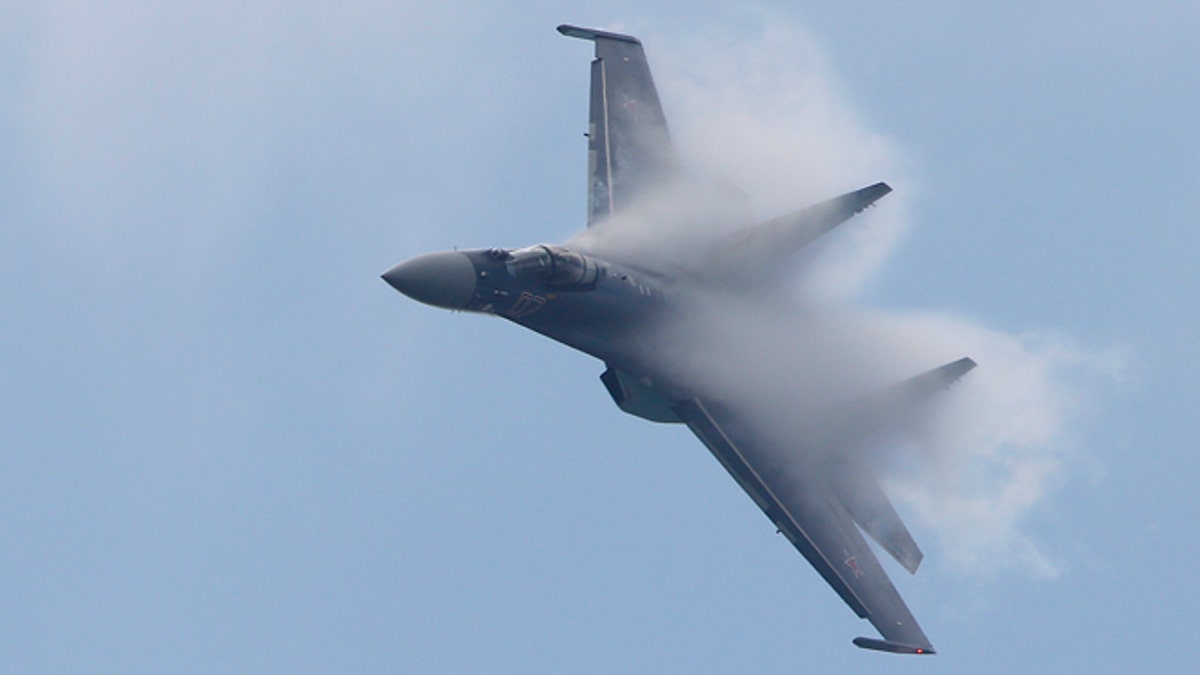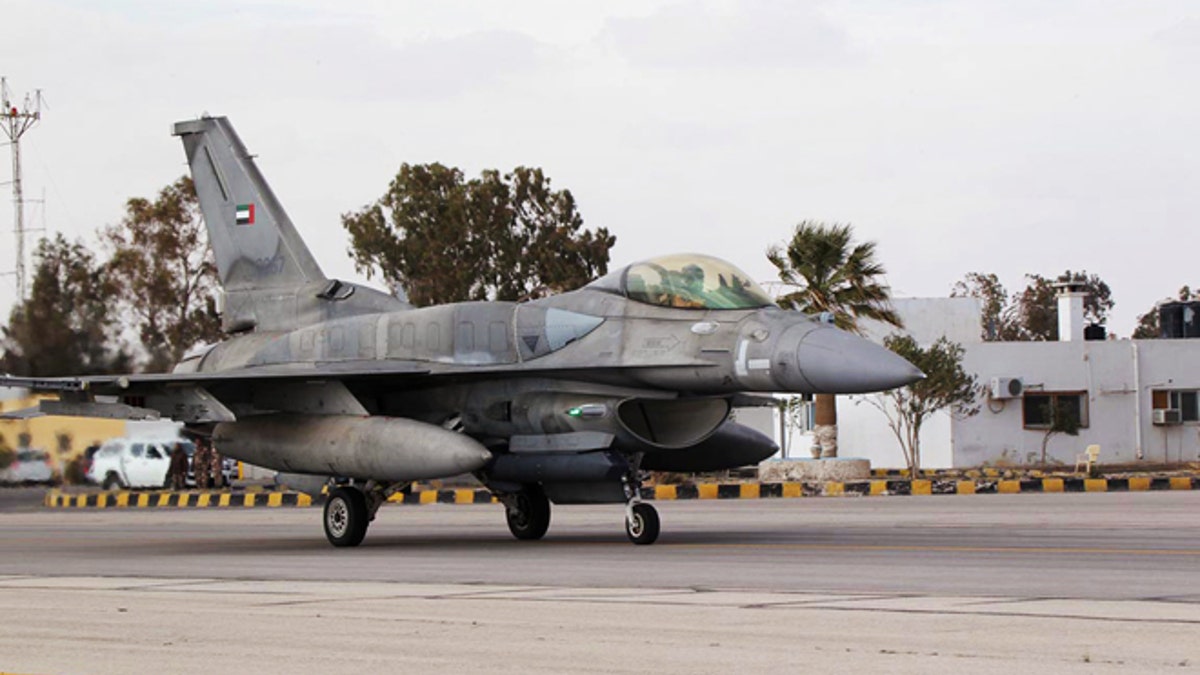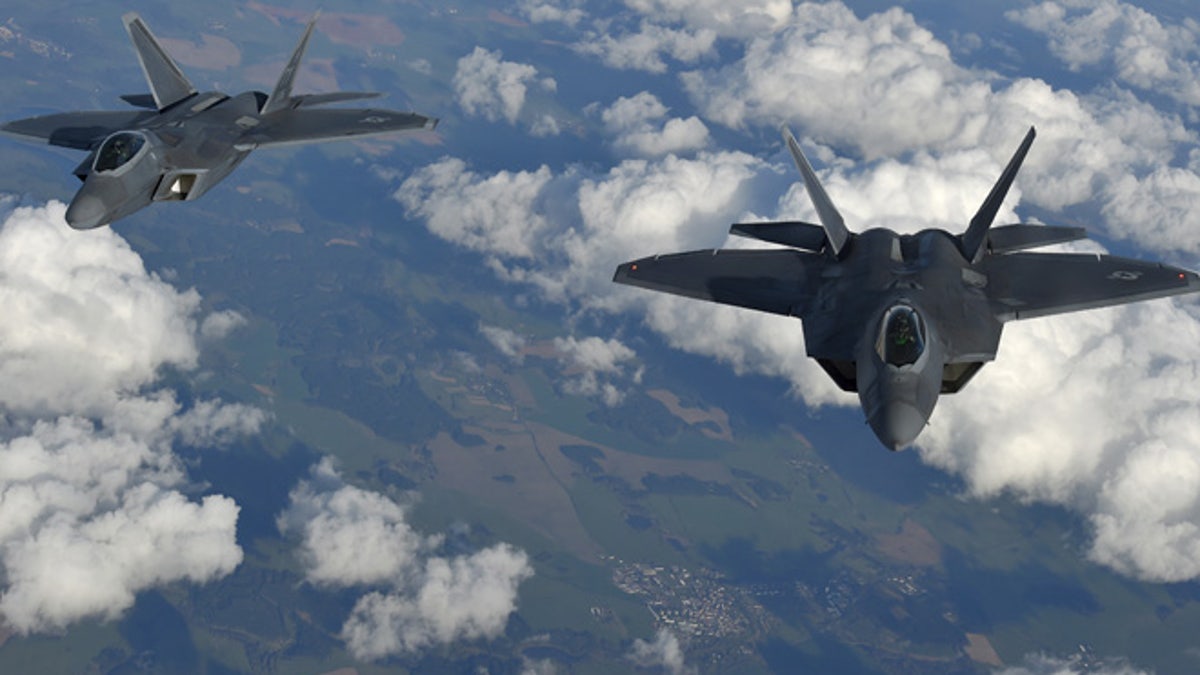
A Sukhoi Su-35 fighter aircraft takes part in a flying display, during the 50th Paris Air Show, at the Le Bourget airport near Paris, June 20, 2013. (Reuters)
In late February, Russian media reported that the country signed an agreement to sell a number of Sukhoi Su-35 Flanker-E fighter jets to the United Arab Emirates and help the Gulf state develop a next-generation fighter that could enter service in seven or eight years.
News of the deal between the Kremlin and the UAE came amid murmurs that Moscow is close to capping off a similar deal to send 10 Flanker-E jets to Indonesia and that Russia is slated to send a second batch of the same warplanes to China.
These deals -- and similar ones across the globe – highlight the government of Russian President Vladimir Putin’s growing use of the Eurasian nation’s defense industry as a diplomatic tool on the world stage and one that appears bent on currying favor among countries with longstanding ties to the United States.
“One of Russia’s majors goals is to reassert itself as a major global power,” Hannah Thoburn, a research fellow at Washington, D.C.-based think tank the Hudson Institute, told Fox News. “That means returning back to what it used to do during the days of the Soviet Union and doing things like this.”
Besides being one of the country’s largest employers and huge economic driver – Putin claims that Russia exported $4.6 billion in weapons and military equipment in 2016 and has a contract portfolio worth more than $50 billion – experts argue that the defense industry has played a crucial role in Kremlin polices in regions less hospitable to U.S. influence.
With the exception of Ukraine and the Baltic states, there is no region in the world that Russia in recent years has asserted more influence over than the Middle East.
Given U.S. reticence under former President Barack Obama to become involved in the conflict, Russia’s influence has been most strongly felt in Syria, where it maintains roughly 36 fighter jets and helicopter gunships to aid President Bashar al-Assad’s forces in the nation’s ongoing civil war. The lack of U.S. action in the war-torn nation -- and its diminishing troop presence in places like Iraq -- appears to have emboldened Russia to begin reaching out to the region’s more U.S.-friendly governments.
“When the U.S. didn’t do anything in Syria, it let Russia take the lead and now Russia is pursuing relations with other nations in the region,” Thoburn said.
This isn’t the first time the UAE has shown an interest in Russian weaponry. Its army uses the Russian BMP-3 armored fighting vehicle and the country looked into buying Sukhoi Su-27M jets during the mid-1990s. But coming at a time of rising tensions between Washington and Moscow, the agreement to send the warplanes to the Arab nation is seen as a particularly bold move given that the Emirati have been one of the U.S.' closest allies since the country’s 1971 founding.
The U.S. was the third country to establish formal diplomatic relations with the UAE and has had an ambassador there since 1974. The two nations have maintained a close security cooperation that increased dramatically during the first Gulf War. Currently, the U.S. Air Force bases its Lockheed Martin F-22 Raptors there for operations over Syria, and the UAE is using the most advanced version of the General Dynamics F-16 Fighting Falcon.
Despite these ties, the U.S. has so far denied the UAE access to the Lockheed Martin F-35 Lightning II or any of the country’s other so-called fifth generation fighter jets – something government officials in the UAE have shown an interest in for several years – and aviation industry insiders say this has led the Arab nation to look toward Russia … for better or worse.
“The UAE also has ambitions to develop its national defense aerospace industrial base,” Douglas Barrie, the senior aerospace fellow at the London-based International Institute for Strategic Studies, told Aviation Week. “But partnership in a Russian project is arguably not necessarily the best way to achieve this.
“An alternative view might be that the move is about trying to gain leverage on the U.S. as to when and how much access the UAE might eventually get to the F-35,” Barrie added.

An F16 fighter jet from the United Arab Emirates (UAE) arrives at an air base in Jordan February 8, 2015. (Reuters)
Lockheed Martin’s F-35 and F-22, along with Russia’s PAK FA and China’s J-20 and FC-31, are all known as fifth-generation fighters, which are defined by heaving stealth technology, high maneuverability, advanced avionics, networked data fusion from sensors and avionics and multirole capabilities. Some nations also define a fifth-generation fighter jet as being able to cruise at supersonic speeds without the use of an afterburner. As of 2017, only the U.S. has these planes currently in active service, although China’s J-30 is in initial production.
Analysts say that the U.S.' reluctance to sell the F-35 to the UAE or any other Middle Eastern nation is based in part on the volatility of the region’s governments and in part on Washington’s close ties with Israel.
The Israeli lobby in the U.S. strongly influences sales of aircraft in the region and the government usually makes military gear available to their counterparts in Tel Aviv first. It took five years for Saudi Arabia to obtain an F-15 Eagle after Israel received them.

Two U.S. F-22 Raptor fighters fly over European airspace during a flight to Britain from Mihail Kogalniceanu air base in Romania April 25, 2016. (Reuters)
Observers, however, say that despite the announced deal between Russia and the UAE nothing is set in stone. U.S. Defense Secretary James Mattis recently met with senior UAE government officials to discuss bilateral defense ties. There is also widespread speculation that President Trump could be more willing to share the country’s military might than his predecessor. Furthermore, Russia has been known in the past to pull out of military deals with little notice.
This also, however, isn’t the first time that Russia has used its defense industry in an attempt to drive a wedge between the U.S. and its allies.
“The U.S. waits for other nations to come to them and propose a deal,” Thoburn said. “Russia takes a much more proactive approach with its defense industry in regards to building its political influence.”
At the height of the 2013 controversy over allegations that the NSA monitored communications between former Brazilian President Dilma Rousseff and her aides, Russian officials traveled to Brasilia to convince the South American nation to consider a bid for its Sukhoi T-50 fighter jet. At the time, Boeing had made a $4 billion proposal to supply Brazil with F-18 fighter jets.
In the end, Brazil eventually placed an order with Sweden's Saab for 36 Gripen NG jets at a cost of $4.5 billion.





















